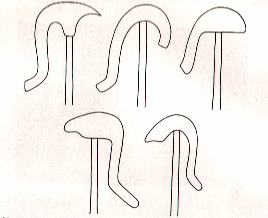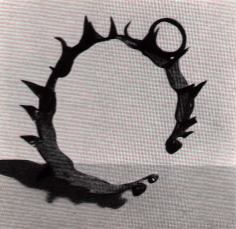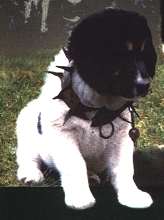| |
Karakachan
Karakachansko Kuche, Karakachan Dog, Karakachan Hund
|
|
|
| |

|
|
|
| |
HISTORY
OF THE KARAKACHAN DOG
|
|
|
| |
|
|
|
| |
The
Karakachan belongs to a very old breed of livestock guardian dogs,
most likely descendants of the shepherd dogs of the old Thracians
and later mixed with dogs of the proto-Bulgars, who came from central
Asia to Europe.
The Karakachan people selected this dog type because it matched
the need they had for a livestock guardian and because they could
mold the type into a specific breed for their specific purpose.
For those very excellent work qualities, this breed was also used
on a large scale by Bulgarian shepherds. The historical record proves
how this Karakachan breed was used by past shepherds whose sheep
herds numbered about 12000 individual animals. Under Turkish rule,
family or clan groups consisting of 20 to 30 families all together
owned 10,000 to 16,000 sheep. In order to guard these enormous herds
effectively and efficiently, shepherds needed no less than 100 dogs.
At the head of these family groups was a wealthy Karakachan (Tschelnik
in Bulgarian), who managed the herds as well as lead the families.
On average, the Tschelnik had 1000 to 2000 sheep under his charge.
At the same time, the shepherds and their herds continued their
nomadic practice, crossing enormous distances. They travelled from
Bulgaria to the warm Aegean Sea coast, where the winter weather
was warm and rainy and where the sheep could take advantage of winter
meadows. During this time period, the Turkish empire flourished.
But when the empire floundered, nomadic shepherds could no longer
maintain their traditions, hemmed in by the formation of new state
borders.
|
|
|
| |

shepherd staff with woodcarving of the Karakachans
|
|
|
| |

several
forms of staff ends
|
|
|
| |
The
Karakachans accommodated much of their culture to a nomadic way
of life. They lived in circular huts made from a braiding of foliage
and branches. To secure his sheep, each shepherd used a distinctive
staff with a hook at one end that was decorated with woodcarving.
This staff also served as a source of protection for the shepherd.
Another key source of protection was the presence of the Karakachan
dogs. These dogs were assimilated into the shepherd's family at
a young age and given the status of a family member. The dogs
ate the same white bread (Kar. Psumi) that the shepherds ate.
This bread was composed of bran mixed with rye flour, although
pure rye and barley meal was considered preferable. Whey was added
to the bread dough and turned into a paste. Karakachan dogs were
fed twice a day and ate approximately one kilogram of bread per
day. Meat was never given to the dogs because shepherds did not
want a dog making an association between meat and sheep or humans.
Along with bread, the dogs also were given a mush of bran and
barley meal. When cheese was prepared, dogs also got whey to drink.
(Whey contains milk acid, milk sugar, carbohydrates and minerals,
and very high-quality although a minor amount of protein. It is
94% water, virtually no fat.
|
|
|
| |

pronged
collar for dogs' protection
|
|
|
| |
The Karakachans demanded two tasks of their dogs. First, they
had to guard the huts; second, they had to guard the livestock.
Dogs guarding the huts patrolled a territory of 1 to 2 kilometers.
When wolves, bears or people approached the huts, the dogs started
to bark and did not let the intruder approach. These dogs were
called "Kopakoschkila". At night, the dogs had small
huts at their disposal. The livestock herds were usually accompanied
by male Karakachan dogs. By the particular sound of the barking,
the people could often discern the visitor's species.
Livestock
guardian Karakachans were given different names at various points
in their lives. Pups were called Kar. Kutrâk. Yearlings
were called Kar. K'tavi. At three years of age, the dogs had matured
into true livestock guardians called Kar. Skila, Skilja. And at
this age, they were also capable of fighting wolves.
To provide an extra advantage in a wolf fight, the livestock guardian
dog frequently wore a collar with sharp prongs (Kar.hanaka) with
the prongss turned outward. These collars were bought from Gypsies.
|
|
|
| |
|
|
|
| |
translated
and edited by Leslie Rugg
|
|
|
|




